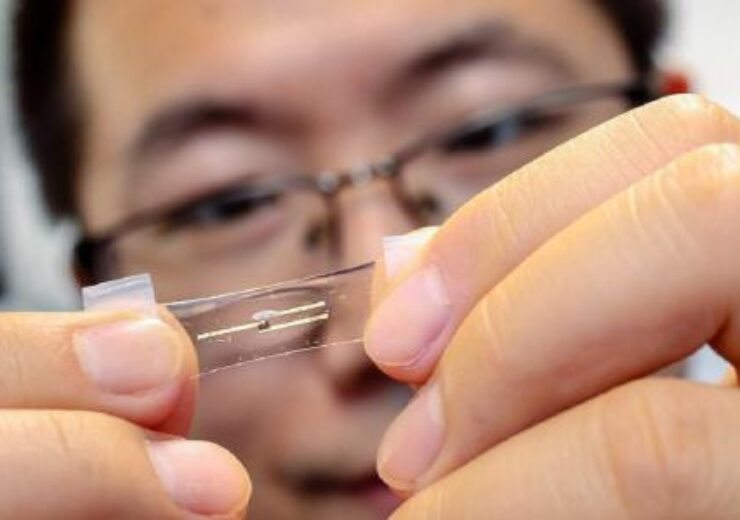The new AI-based wearable electronics can be used for precision medical sensors attached to the skin to monitor health and diagnosis

AI-based wearable electronics can process massive amounts of health information in real-time. (Credit: UChicago’s PME)
The US Department of Energy’s (DOE) Argonne National Laboratory and the University of Chicago’s Pritzker School of Molecular Engineering (UChicago PME) are jointly developing a skin-like flexible, wearable device for health monitoring.
The new artificial intelligence (AI) based wearable electronics are expected to be used for precision medical sensors attached to the skin to monitor health and diagnosis, said Argonne Laboratory.
According to the research centre, the device can identify potential health issues, such as heart disease, cancer, or multiple sclerosis, even before obvious symptoms are seen. It can also reduce the necessity for wireless transmission, while personalising the analysis of the tracked health data.
PME assistant professor Sihong Wang said: “The diagnosis for the same health measurements could differ depending on the person’s age, medical history and other factors.
“Such a diagnosis, with health information being continuously gathered over an extended period, is very data intensive.”
The wearable device is based on neuromorphic computing which makes the device compatible with stretchable material. It also consumes less energy, and provides faster speed than other types of AI, the research laboratory said.
Argonne National Laboratory said that the device incorporates the electronics into a skin-like stretchable material by using the team’s neuromorphic chip along with flexible gold nanowire electrodes and a thin plastic semiconductor layer. The device performed as intended even when it was stretched to double its regular size, claimed the research centre.
The US-based lab added that the device was also trained to identify four different electrocardiogram (ECG) signals that indicate various types of health issues. Following training, the device is said to have been more than 95% accurate in recognising the ECG signals.
On exposure to a strong X-ray beam, the molecules in the skin-like device material underwent reorganisation upon doubling in length. These findings offered molecular-level details to understand the material properties, said the research centre.
Argonne National Laboratory physicist Joe Strzalka said: “The planned upgrade of the APS will increase the brightness of its X-ray beams by up to 500 times.
“We look forward to studying the device material under its regular operating conditions, interacting with charged particles and changing electrical potential in its environment.”
The research project was funded by the National Science Foundation, the US Office of Naval Research, and a start-up fund from the University of Chicago.
